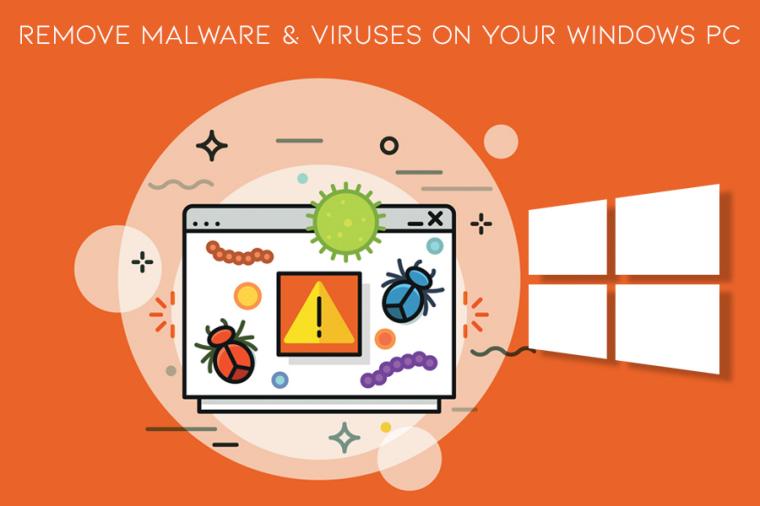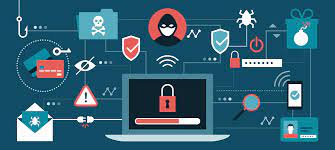Bluetooth Trackers
Some individuals may never be able to recall where they left their keys, but Bluetooth trackers make it easy to locate them and other belongings as well.
Martin Wilson
Aug 02, 2022
We have compiled a step-by-step tutorial that details the process of removing malware from a Mac or PC. These efforts at infection will often aim to generate a feeling of urgency in the target to get them to download malicious software or files carrying concealed viruses. Always care while you're online, and avoid clicking on links or opening emails from sources you're unfamiliar with.
Both Macs and PCs are susceptible to infection from malware. Macs may be just as vulnerable to this weakness as PCs, even though PCs are more generally recognised for drawing it. It does not matter what kind of gadget you use; you must be aware of the danger posed by malicious software.
Before doing anything else, you should ensure that your personal computer is disconnected from the Internet. This will prevent your computer from being able to communicate with the malware server that may be controlling it, and it will also prevent your computer from transmitting any of your personal information that it may have collected. If you need to download a programme to assist you in removing the infection, do it as fast as possible, and as soon as it is completed, unplug from the Internet as soon as possible. Try as much as possible to avoid going online.
You can determine whether your computer has a problem by restarting it in safe mode. Your computer will be able to carry out checks while simultaneously running the bare minimum of applications required for it to function properly.
Step 1: Restart your PC.
Step 2: Hold down the Shift key and choose Power >'' Restart from the menu when you see the screen where you sign in.
Step 3: Once your personal computer has completed its restart, go to the "Choose an option" box and choose "Troubleshoot", followed by "Advanced Options" and "Startup Settings."
Step 4: Once you have reached the following screen, click the "Restart" button and wait for the next screen to load.
Step 5: After this, a menu with numbered choices for the starting process will display. To start your computer in safe mode, choose the number 4 or press the F4 key.
The purpose of many types of malicious Windows software is to steal your private information or obtain access to it. Avoid logging in at all costs, so you don't have to worry about losing your login information.

Eliminating temporary files may make your virus scan faster and save up some space on your disc. You only need to look for the "Disk Cleanup" programme and then run it.
If you suspect your computer is infected with dangerous software, you should look for it in the Activity Monitor to prevent it from operating. You can see all of the currently active apps on your computer, as well as how each one impacts the performance of your machine by using the Activity Monitor.
Step 1: locate your device's search bar and enter "resource monitor" to locate the appropriate application.
Step 2: Select the application whose process you wish to stop using the right mouse button, then click "End Process."
You are now prepared to clean your computer of the malware problem it has truly. The good news is that the most common infestations may be eliminated from your computer simply by running a malware scanner. If you already have an antivirus programme installed on your computer, you should download an on-demand malware scanner distinct from the antivirus software you are now using. Protects you against current dangers and newly discovered threats to your computer's security. Applications such as Panda's Antivirus for PC are quite helpful in this regard.

Malware will, in the vast majority of instances, seek to change the homepage of your internet browser so that it may reinfect your device, display advertising to you, slow down your surfing, and plain and irritate you. Both Macs and PCs are susceptible to infection from malware. Macs may be just as vulnerable to this weakness as PCs, even though PCs are more generally recognised for drawing it. First, ensure that the URL of the homepage is correct, and only after that should you continue to check your internet browser for any dangerous extensions.
Bluetooth Trackers
Some individuals may never be able to recall where they left their keys, but Bluetooth trackers make it easy to locate them and other belongings as well.
15 shortcut keys and touchpad operation of Win10
Even though it is not mandatory and necessary to learn the shortcut keys while using a computer, but it can save time while increasing working efficiency.
Hidden Features of Rexing V360 Dash Cam
The Rexing V360, available on Amazon for $170, has an outstanding touch display and user interface. At least during the day, the one-of-a-kind front camera with a 360-degree field of view records far more motion both inside and outside.
What Are The Best PDF Editors?
There are numerous PDF editors available either for free or paid. Which of the top PDF editors will meet your requirements? The most effective PDF editors allow you to open nearly every Portable Document File so that you can alter, edit and annotate it, add the file, or remove it from it.
Privacy Policy | Terms of Use
Copyright © 2021.All rights Reserved.
Contact us at : [email protected]



